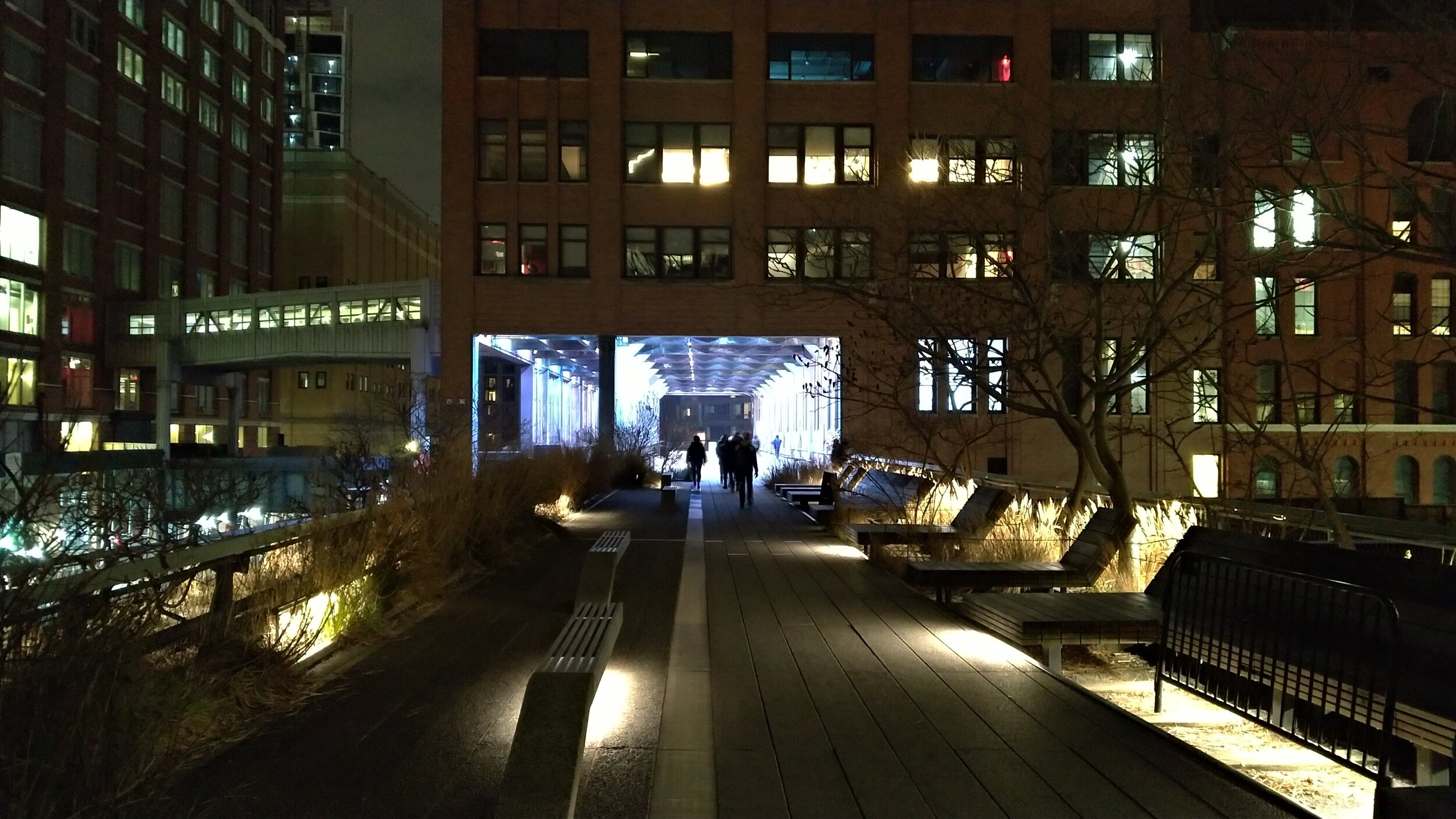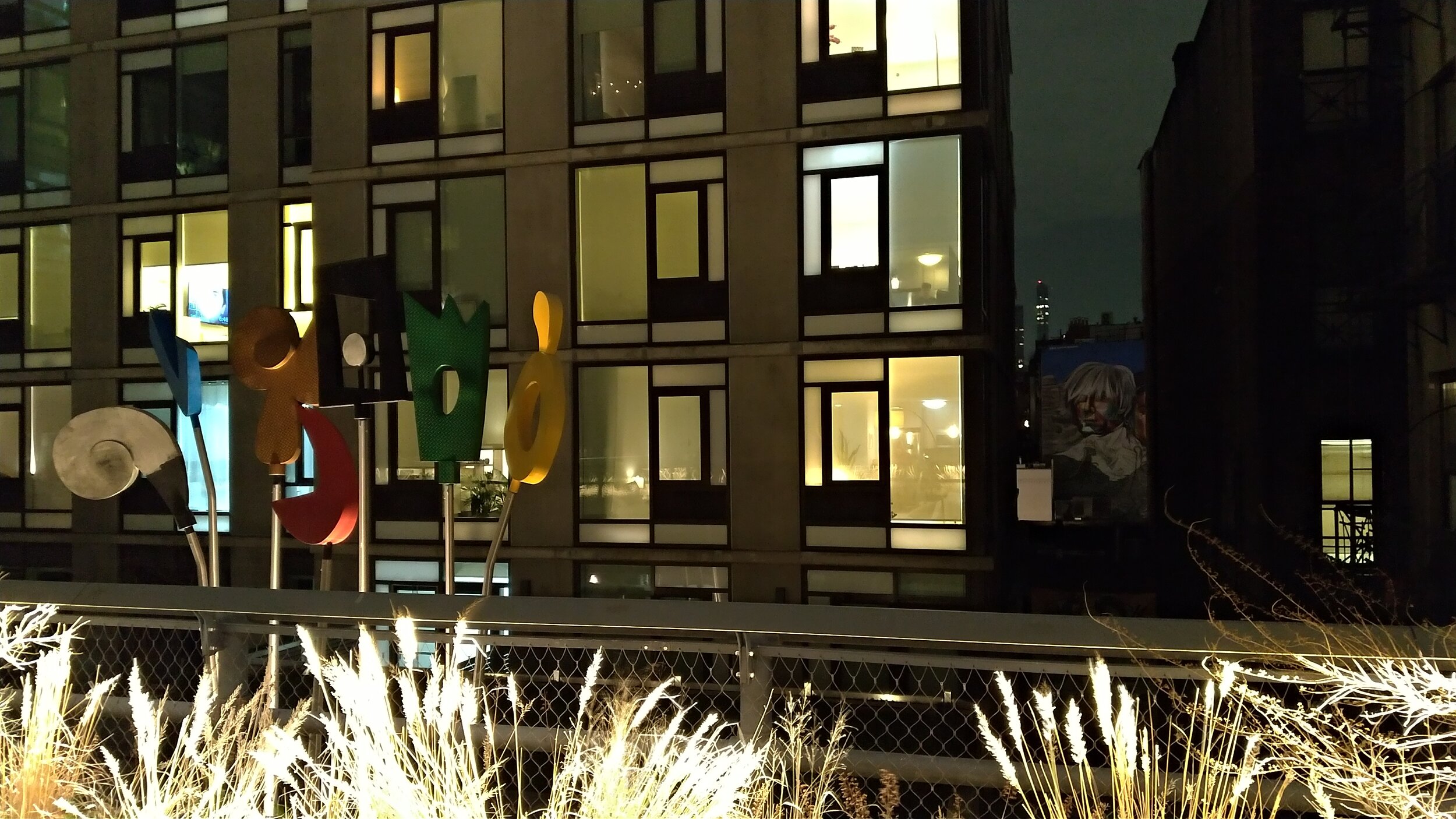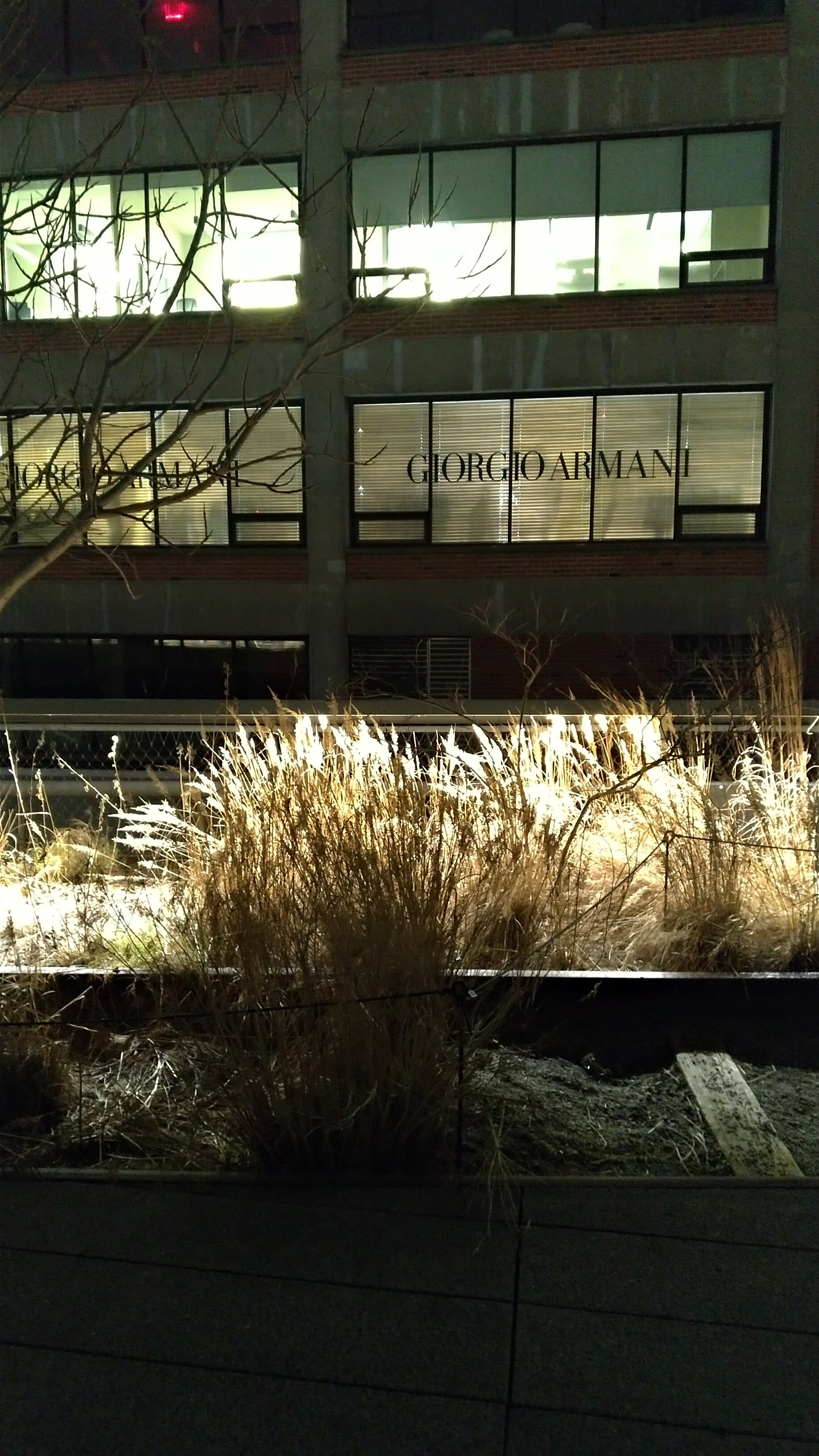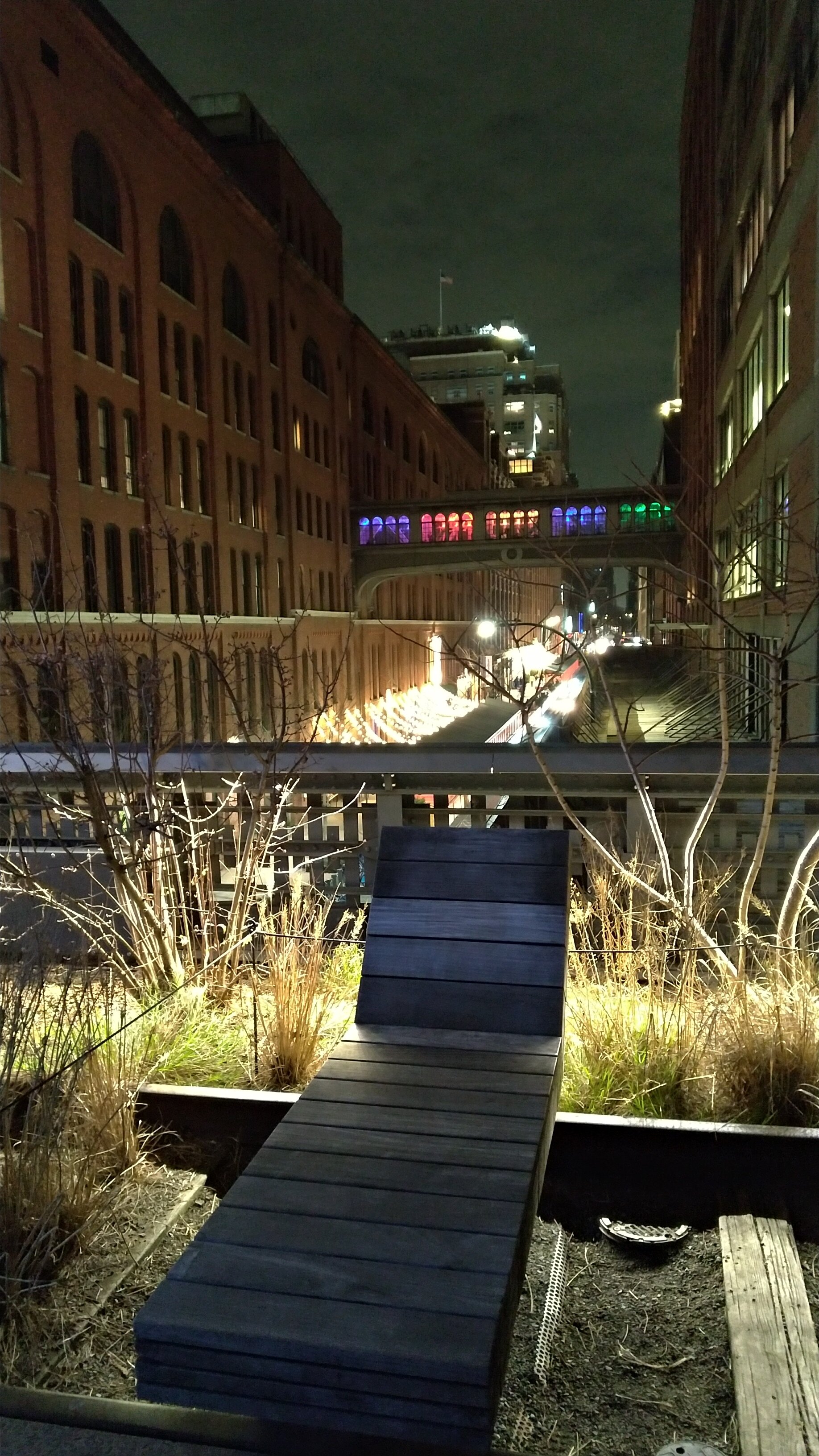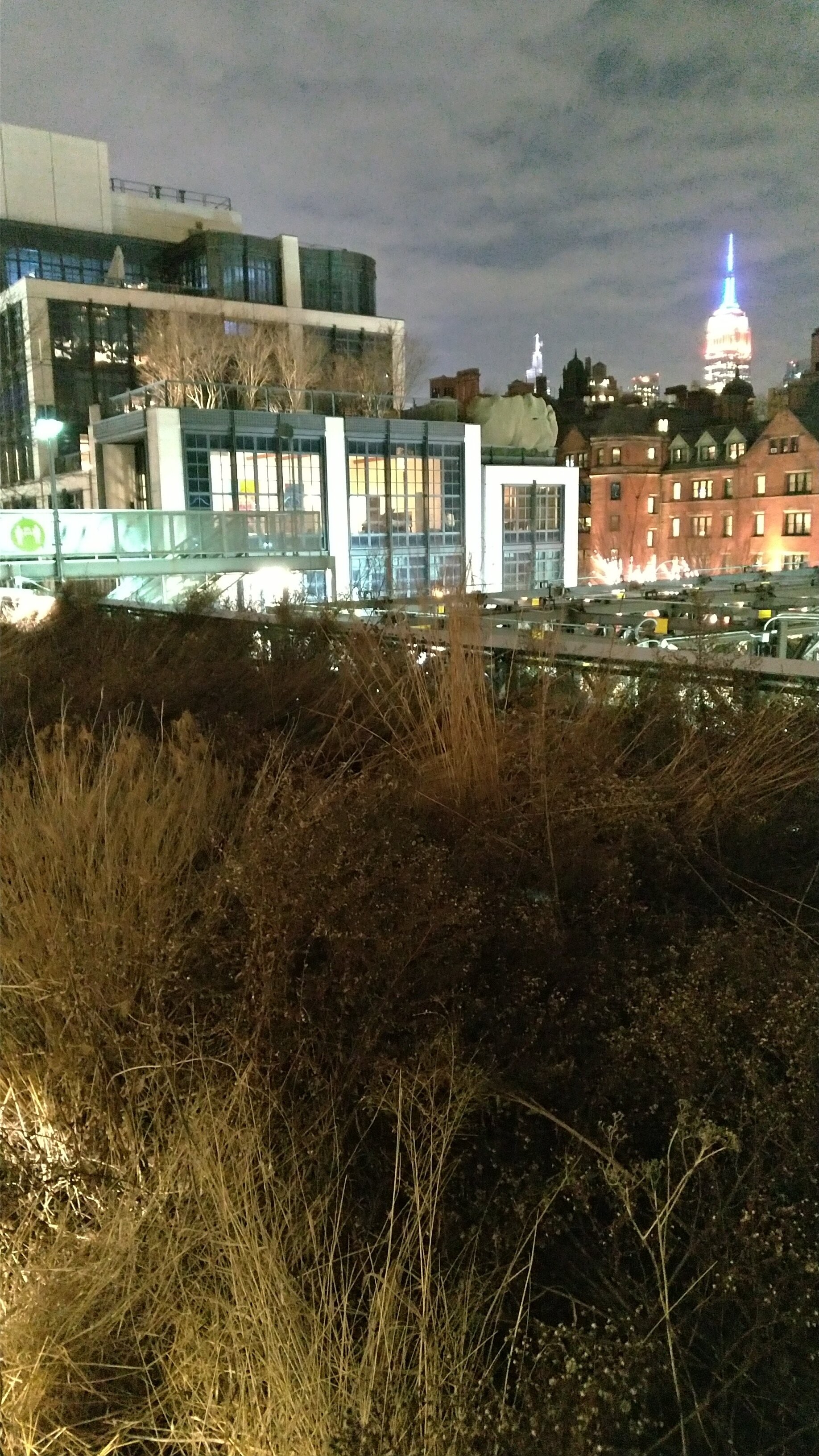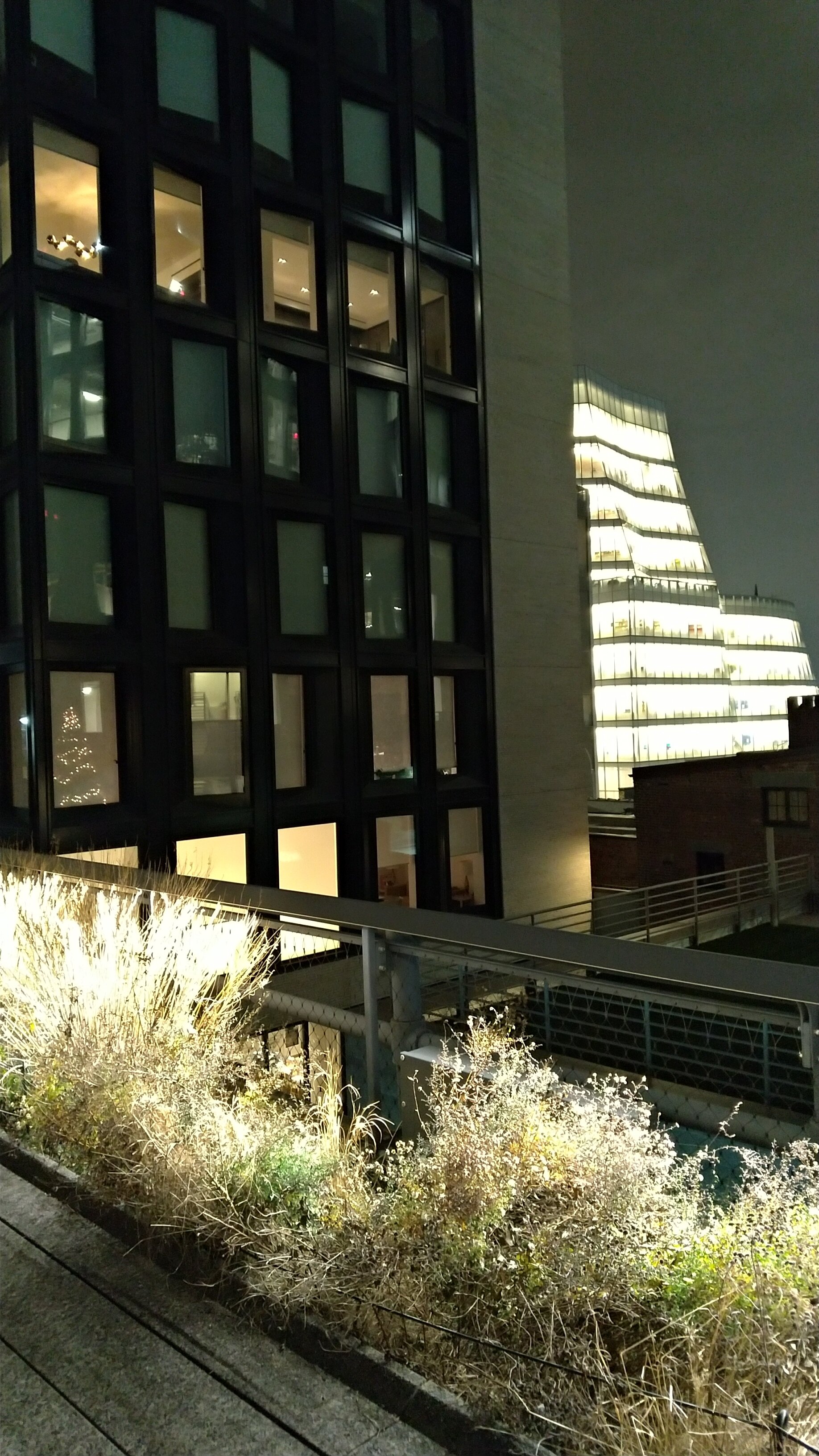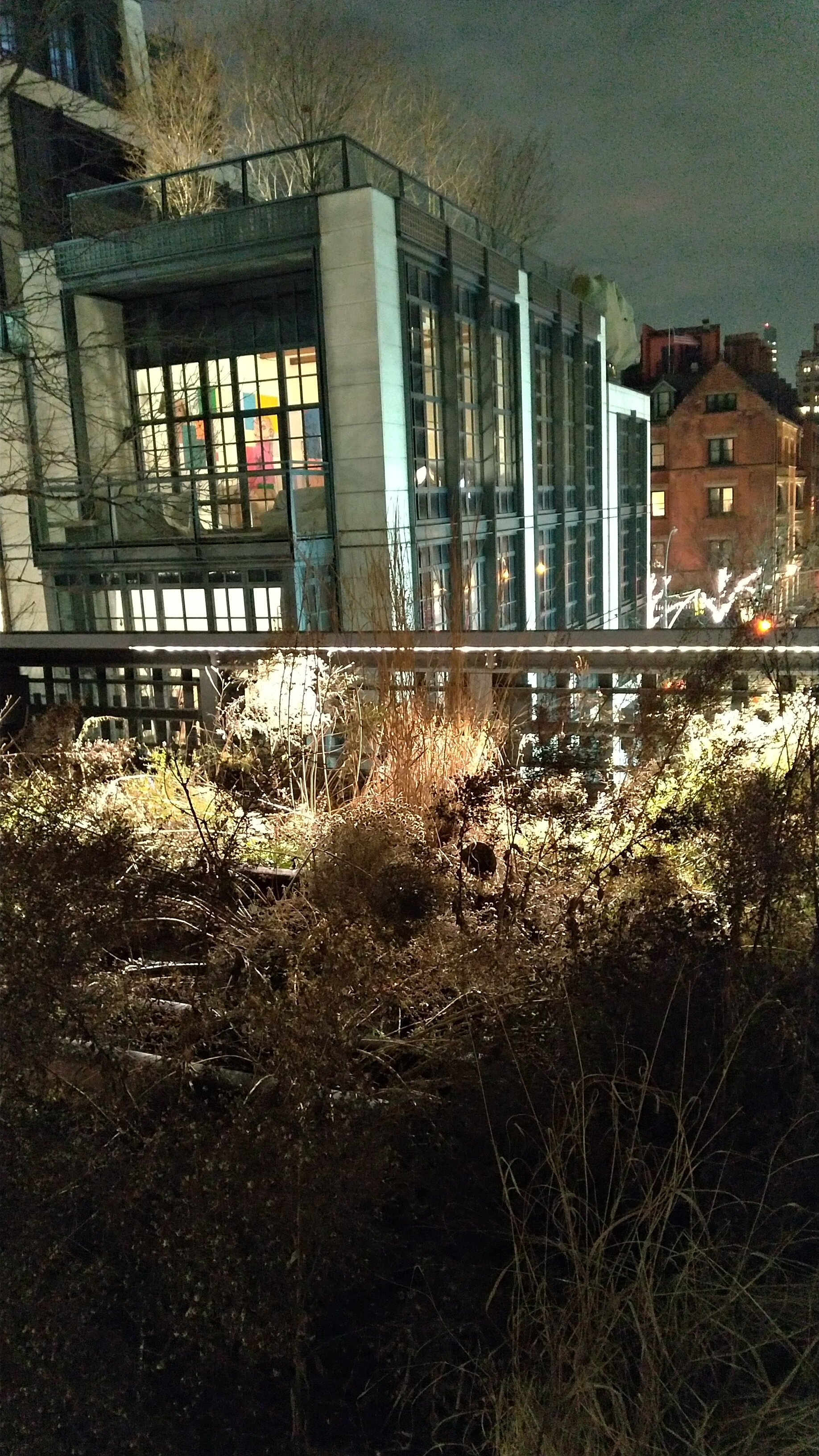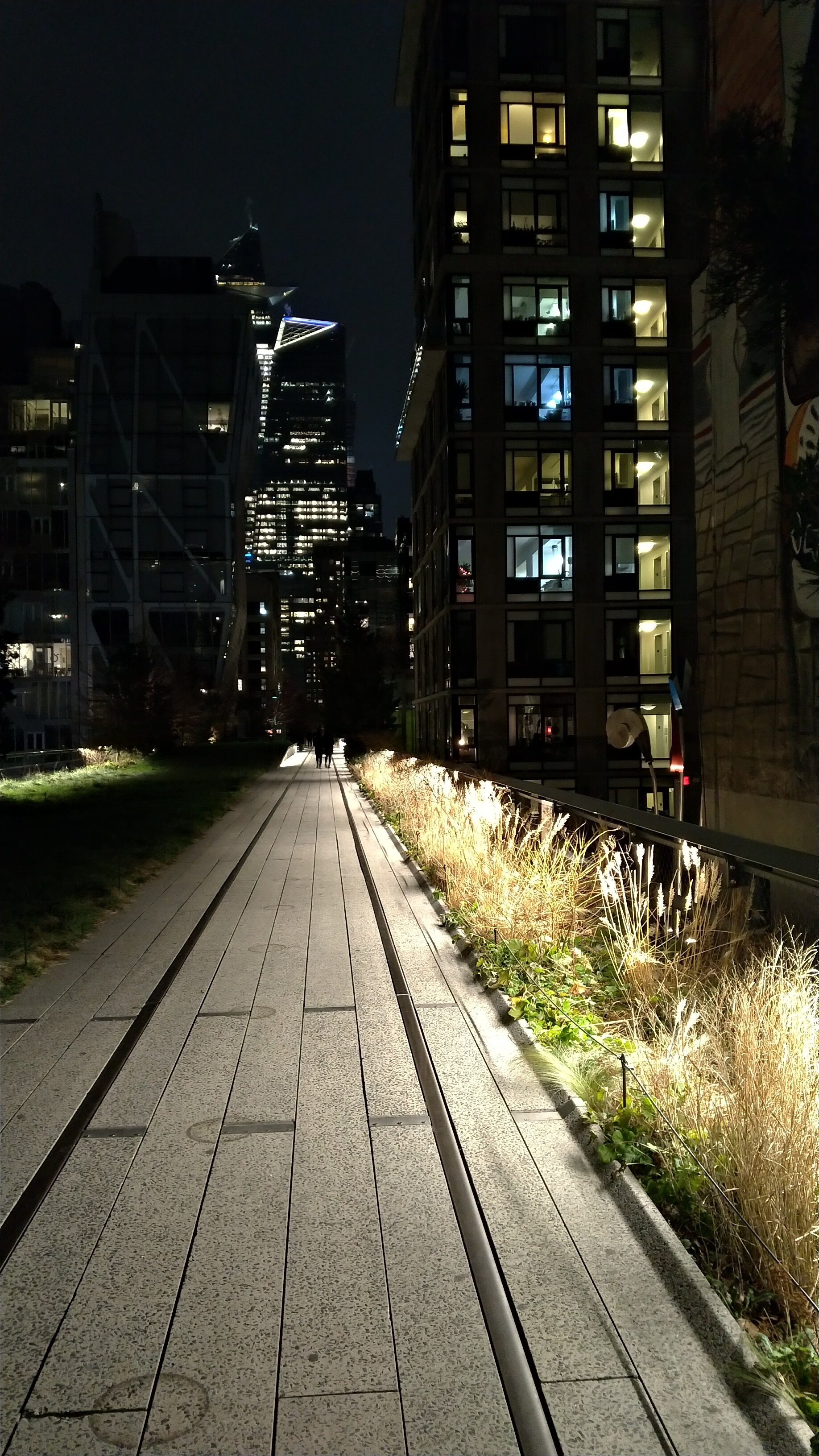Upon exiting the Whitney Museum on a weekday night, I could not believe my luck that the nearby High Line was open! I was about to bypass it, since I had read that visitors to New York’s most original park (?) were admitted only with timed-entry, in accordance with COVID-19 capacity limitations.
Feeling as if I had just won an extra round in the endless amusement park that any expedition in this city of wonders may turn at any moment (right when you think the outing is over, here you go, they offer you a token to an extra ride!), I impatiently climb the stairs of the elevated former rail line that, since 2009, has been converted into a unique park / mixed-use space.
(I hesitate only momentarily, thinking that I would have to “sacrifice” my night stroll through the hip Meatpacking District, which combines industrial remnants with luxury fashion brands and trendy bars and restaurants. I’m curious –what’s open?)
Both the greenway and the surrounding streets feel deserted (it turns out I didn’t have to sacrifice anything, since from up here I have the best possible view to the neighborhood). The atmospheric lighting is strong enough so that you don’t trip over the rails that have been smartly left on the landscaped floor, while leaving room to darkness so that you can comfortably see the night city and its reflections. Flashes from Stalker race through my head, but I don’t remember it very well. (The Zone?...) The set here is futuristic but not outer space-like.
Still, why do I feel as if I’ve found myself in another dimension? But because I’m in a hanging garden! All sorts of wild grass, bushes and low trees spring between the main path and the bridge’s railings or cover green beds of land strewn here and there or romantically frame the -much sought-after in the sweet summer- wooden permanent chaises longues. The linear park occasionally widens on either side of the basic artery, making space for landings full of greenery, benches and art installations. The vegetation alternates with tunnels painted in mauve lighting, since today’s walkway cuts through former industrial buildings, exactly the way did the freight train until 1980 in order to directly load and unload cargo inside factories like Nabisco.
The (carefully designed) wild grass looks as if it’s taken over the construction and goes into contrast with the urban backdrop -the Empire State Building in the background and the sleek Armani offices pop up through wild flowers and grass tufts. The High Line is a “wild park.” The planting design was based precisely on what the visionaries who fought for the preservation of the slated for demolition abandoned… “zone” saw in front of their eyes: nature thriving in the out-of-use tracks.
(I wish it were possible in a parallel universe to also materialize another one of the totally 720 proposals submitted at the reuse competition: that of the repurposing of the weedy rail trail into a mile-long lap pool.)
Of course there’s ground for the filmic feel; but I’m not in the movie, I’m in the movie set. The tracks under my feet drive the traveling shot. On top of that, due to the pandemic, there’s special marking on the flooring indicating the imposed circulation: this is a two-way path. KEEP RIGHT AND KEEP MOVING. (The future is here.)
The fashionable eighteen-story Standard Hotel and the historic, also eighteen-story, London Terrace apartment complex grow on either side of the promenade, but at a certain distance. Other buildings, though, stand within arm’s reach! No matter how discreet you try to be, it’s impossible not to catch glimpse of the tenants as they do their evening workout or prepare dinner or wait for their load to be done at the building’s laundry room. It is not us who are voyeurists - it’s them who are exhibitionists, since they have their curtains drawn (in fact, some don’t even have curtains), and since apartments as well as lobby areas are as intricately lit as the plants on the High Line. These tenants are paying a fortune to live here, so we may assume that they want us to look at them… (I didn’t notice anybody looking out, except for a cat seated majestically by the window and gazing at the handful of passers-by.)
It isn’t hard to guess the macabre past of the now chic Meatpacking District (and it isn’t easy for a vegetarian to disregard it): the meat-processing plants and butcher shops, although in decline already since the 1960s, were definitively removed rather recently. (A New Yorker friend has narrated to me first hand how, until as late as in the 1990s, every day he got out of his -now worth millions- Greenwich Street apartment, he would encounter huge drums filled with skinned sheep's heads.)
But I didn’t know how blood-drenched High Line itself is. Originally positioned at the level of pedestrian and vehicle traffic, the freight railroad cut through Lower Manhattan since mid-19th century transporting food. By 1910 it had caused so many accidents (more than 540 people had lost their lives) that Tenth Avenue (along which the line ran) had been nicknamed Death Avenue! To reduce accidents, men on horses were recruited to ride ahead of the trains warning pedestrians with red flags. The “West Side Cowboys” were gradually withdrawn, when in 1934 the line was elevated.
I have a feeling Tarkovsky would utilize that…
This essay first appeared in Greek in the TA NEA newspaper (online) on May 6, 2021.
It was reproduced by HellasJournal.com on July 24, 2021.
Το κείμενο αυτό πρωτοδημοσιεύτηκε στην εφημερίδα ΤΑ ΝΕΑ (ηλεκτρονική έκδοση) στις 6 Μαΐου 2021.
Αναδημοσιεύτηκε από το HellasJournal.com στις 24 Ιουλίου 2021.
